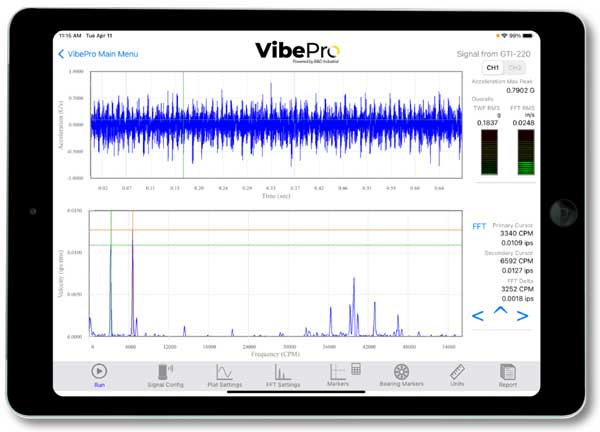A recent report by Grandview Research suggests that the value of the CNC machinery market will increase to over $100 Billion by 2025. This means that businesses that rely on CNC equipment for fabrication can expect an increase in investment and technology in the CNC world, as well as higher levels of competition when it comes to vendors and services.
CNC machines offer businesses a highly efficient, minimal labor involved method of manufacturing components. However, the productivity level of these machines is directly related to the overall health and lifespan of the core components, such as spindles. It is estimated that in some industries as much as 26% of the overall downtime of CNC machines is related to spindle failure. This is why monitoring and reacting to machine performance data is key to getting the most out of your equipment.
What makes up the spindle component?
The spindle component in a CNC machine is usually made up of a few subcomponents, including rotor shaft, bearings and clamping system, all of which are subject to wear and tear and can lead to total component failure, rendering the entire machine unproductive until the spindle is repaired.
One of the main reasons for spindle health deterioration over time is the impact of machine process vibrations. Vibration can be caused by a wide range of factors. High loads, unbalanced tools, deteriorating bearings, misalignment. While a certain amount of vibration is accounted for, it’s critical for machine operators to have a tool to visualize when vibration levels become abnormal. Vibration analysis tools provide a remedy before damage is done as repairing the problem after total failure is always far more costly.
How does vibration sensor technology help extend the spindle’s lifespan?
Vibration sensor technology has come a long way in the past five years. Many new machines are fitted with real-time vibration sensors; however, older equipment can be retroactively fitted with these devices to enhance an operator’s ability to understand the detailed performance of the machine during uptime. Wireless sensor technology has given us the breakthrough technology to efficiently place high accuracy sensors behind machine doors to quickly collect this important data. These sensors are able to capture a wide range of performance data including the vibration readings when a machine is operating under a very light load, without a load at all, or under very high speeds.
In addition, data can be collected, and cross analyzed with other data points, such as output productivity, or quality of finish in order to build a database of information to help understand how vibration readings can be used to predict both outputs, quality and the likelihood of machine failure. When this data is captured, we are able to store and analyze it for use with predictive maintenance programs and asset profitability calculations.

What is the real power of knowing your vibration readings?
When it comes to vibration readings, knowing the facts is key to the overall productivity of your CNC fleet. Not only does this data help operators make real-time decisions that increase both productivity and quality of output, but it also helps businesses predict if and when spindle components of the machine require repair or spindle balance. This helps to optimize servicing costs associated with keeping the machine running and minimizes the risk of total failure, which heavily impacts the productivity and profitability of the business.
About GTI Spindle Technology
At GTI Spindle Technology, we specialize in high-quality spindle diagnosis and repair. Getting your business back into full operation and minimizing downtime is our mission. We offer in-house, on-site, and emergency assistance for machine tool spindle failure analysis, spindle repair, and complete spindle testing. With an extensive range and expertise in a diverse group of industries, our customers know that they are getting the highest quality of spindle repair and customer service. Click here to find out more.
